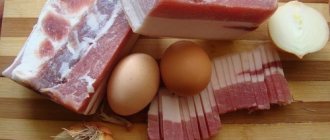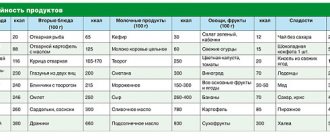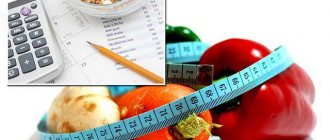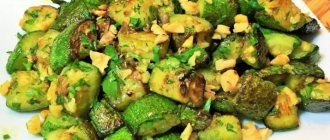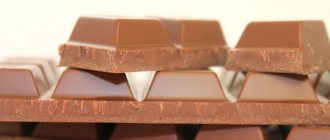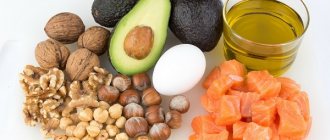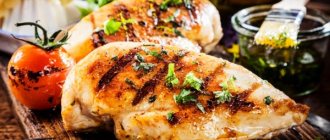One of the most popular methods of losing weight is a calorie-counting diet. You need to create the menu for this diet yourself, focusing on your daily calorie intake. Damiko tells you how to do it right.
At the end of the week, carefully analyze your notes, see what you can remove from your diet, and create a menu for the next week. When creating your menu, consider our recommendations.
New evidence shows a relationship between the timing of daily meals and weight regulation in animals. In humans, overnight food transfer has been shown to disrupt metabolic homeostasis and increase postprandial triglycerides. Additionally, two cross-sectional studies in adults found an increased risk of overweight and obesity when more of daily caloric intake was eaten in the evening—but a prospective cohort study found no association between evening eating and weight change.
No human studies have examined the relationship between meal timing and nonalcoholic fatty liver disease, excessive fat accumulation in the liver closely associated with obesity and insulin resistance, which can be predicted by noninvasive tools.
The optimal number of meals is 5-6 per day. In this case, the following requirements are put forward for each meal.
Breakfast
Breakfast should be the most satisfying. Its calorie content should be about 30-40% of your daily calorie intake. Give preference to carbohydrate foods: cereals, muesli, bread. You can add nuts, dried fruits, and honey to the porridge.
Our objective was to prospectively evaluate whether daily calorie intake at lunch predicts susceptibility to obesity, hyperglycemia, metabolic syndrome, and estimated body fat in a population of middle-aged adults.
These subjects were representative of the age population living in the province of Asti. Both participants and non-participants were similar to the general population of the corresponding age range in terms of prevalence of men, education, prevalence of known diabetes, and rural residence. Patients with obesity or type 2 diabetes at baseline and those who died during follow-up were excluded.
Lunch
Second breakfast should account for about 10-15% of your daily calorie intake. The best option for a second breakfast is fruits or nuts.
Dinner
You need to pay due attention to lunch, because if you don’t have a good lunch, by the evening you risk getting hungry and pouncing on food, exceeding your calorie allowance. For lunch, eat meat or fish with a vegetable side dish. It is also advisable to prepare some soup for yourself. The optimal calorie content for lunch is 25-35% of the daily calorie intake.
All procedures comply with the principles of the Declaration of Helsinki. In the morning, after at least 12 hours of fasting, weight, height, waist circumference and blood pressure. Waist circumference was measured with a plastic tape measure at the level of the umbilicus. Blood pressure measurements were taken using mercury sphygmomanometers and appropriate cuff sizes after 10 minutes of rest in a sitting position; The reported values are means of two measurements.
Data on smoking status, alcohol consumption, educational level, health status, current medications, average weekly number of meals consumed in restaurants, and hours of sleep were collected for each subject. Sleep duration was defined as self-care time in bed minus sleep latency. Meal frequency was assessed using ten categories ranging from “never” to “five times a day or more,” while quantity was determined comparatively using photographs of standard portion sizes.
Afternoon snack
The calorie content of an afternoon snack is about 10% of your daily calorie intake. For an afternoon snack you can eat fruits, dried fruits, cheese, yogurt.
Dinner
For dinner, eat food rich in proteins: boiled fish, eggs, cottage cheese. After your meal, you can drink a glass of low-fat kefir or unsweetened yogurt. Remember that dinner should be light - 10-15% of the daily calorie intake.
At baseline, all subjects were submitted to a 3-day food recording session, which consisted of a detailed written food diary. Subjects were instructed to record everything they ate or drank on 2 consecutive weekdays and 1 weekend day. A temporal pattern of food consumption was also recorded as participants were asked to list foods eaten for breakfast, lunch, dinner, and mid-morning, mid-afternoon, and after dinner. An instruction sheet defining each meal was given along with the food record: breakfast was defined as the meal consumed upon waking; mid-morning meal, as food consumed after breakfast and before lunch in the morning, lunch, as food consumed from 12 to 15, midday, as food consumed after lunch before dinner, before 19; lunch, as food consumed from 19 to 22; afternoon meal, as a meal consumed after dinner, before falling asleep.
Breakfast
- Oatmeal with honey and walnuts* (435 kcal)
- Tea without sugar (0 kcal)
Breakfast calorie content 435 kcal
Lunch
- Banana (140 kcal)
- 250 ml low-fat kefir (75 kcal)
Calorie content of second breakfast 215 kcal
This was in keeping with Italian habits. We believed that lunch was self-service, like dinner; skipping breakfast was defined as not reporting consumption of any food at breakfast. When assessing meal frequency, we considered as a meal each episode with a caloric intake corresponding to at least 15% of the total daily caloric intake.
Negative aspects of the diet
A dietitian blinded to the details of the study reviewed all questionnaires for completeness, internal consistency, and credibility. In case of uncertain responses, patients were interviewed by a dietician. Overall, patient compliance was high due to collaboration with GPs who supported patients during recall and data collection.
Dinner
- 100 g boiled chicken breast (114 kcal)
- 150 ml vegetable soup (about 60 kcal)
- 200 g stewed eggplants with tomatoes (230 kcal)
- Tea (0 kcal)
Lunch calories 404 kcal
Afternoon snack
- 2 pieces of cheese (80 kcal)
- 150 g raspberries (68 kcal)
- 200 ml low-fat kefir (60 kcal)
Calorie content of the afternoon snack 208 kcal
Dinner
- 100 g carp baked in foil (112 kcal)
- 150 g beet salad (boiled beets, prunes, sour cream, lemon juice) (120 kcal)
- Mint tea (0 kcal)
Calorie content of dinner 232 kcal
The reliability of reported energy intake was assessed by calculating the ratio of estimated energy intake to predicted basal metabolic rate using age- and sex-specific formulas derived by Schofield. Physical activity level was calculated as the product of duration and frequency of each activity, weighted by the estimated metabolic equivalent of the activity and summed for activities performed.
Laboratory methods have been previously described. Hemoglobin glycide values were assessed using high-performance liquid chromatography. This is a standardized method certified by the International Federation of Clinical Chemistry and Laboratory Medicine. Weight, waist circumference, and blood pressure were measured, and a blood sample was withdrawn to determine the same fasting metabolic parameters assessed at baseline. Because the visits were conducted in collaboration with the patients' GPs, we were able to contact all patients.
* For 50 g of oatmeal, take 1 tablespoon of honey and 25 g of walnuts.
Finally, a few rules that will help you achieve maximum effect from the diet.
- During the diet, drink 1.5-2 liters of water per day.
- Get at least 8 hours of sleep.
- Don't forget about moderate physical activity.
- Don't try to eat less than your daily calorie intake.
Every day we consume a certain amount of calories, and every day our body spends a certain amount on vital processes. If we consume more calories than our body needs, it stores everything “in reserve” as fat, and our weight increases. If we consume fewer calories than the body needs, it begins to use up reserves - that is, it breaks down fat and tries to adapt to the new regime. If we consume very few calories, the body begins to extract energy from its own tissues - both muscles and organ tissues are used. Nutritional calorie content can tell us how many calories we eat in food. Knowing the caloric content of food, we can give the body exactly as many calories as it needs, and no more.
The insulin resistance homeostasis assessment model was used to assess insulin resistance. Diabetes and impaired fasting glucose were defined according to published guidelines. Estimated liver fat percentage was calculated using liver fat.
All analyzes then used log-transformed values. For ease of data interpretation, untransformed values are presented in tables. The Friedman test was used to identify within-person differences in caloric intake at dinner after 3 days of food records.
The calorie content of food depends on the foods included in the diet. If you ate fatty borscht with pork, potatoes fried in lard with lamb ribs, Olivier salad and washed it all down with jelly, the calorie content of your lunch will go over 1000 kcal. And if you ate fish soup made from lean fish, baked chicken breast with vegetable salad and green tea, you most likely met 300-400 kcal.
Both unadjusted and adjusted models were performed for each outcome variable. The lowest calorie intake at lunch was treated as the reference group, and the other two groups were entered as dummy variables.
Daily menu with calories
The average caloric intake at lunch over the 3 days was 4 ± 4 kcal; The mean calorie intake from dinner was not significantly different during periods 1, 2, and 3: 1, 9, and 4 kcal, respectively. Among dinner calorie consumption termites, the percentage of underconsumers did not differ.
Fats and fast carbohydrates are the highest in calories. Porridges and cereals have average calorie content. Vegetables have a very low calorie content - you can eat a large cup of salad of tomatoes and cucumbers with herbs, and the calorie content of such a dish will be only 150-200 kcal. Low-calorie foods include low-fat protein products - chicken, turkey, lean fish, as well as dairy products - kefir, cottage cheese. Boiled and baked foods are lower in calories than fried foods, as they are cooked without oil. Lean pork kebab has less calories than lamb kebab. The calorie content of a chocolate bar is 2 times greater than the calorie content of a plate of borscht. The calorie content of a cake is greater than the calorie content of two apples. As you can see, filling and nutritious meals may not contain any calories at all, while high-calorie foods will not always be healthy and satisfying.
Basic lifestyle and dietary characteristics by percentage of daily energy intake at lunch are shown in Table 1; Subjects' clinical and laboratory values are presented in Table 2. The composition of the lunch diet, with the exception of total calories, did not differ among groups.
Distribution of calories during the day
The average follow-up period was 1 - 34 years. Subjects consuming the most calories at dinner comprised nearly a third of our sample, consistent with the literature. After a 6-year follow-up, these people were 2 times more likely to be obese. Several cross-sectional studies have shown that while greater daily energy intake in the evening is associated with an increased risk of overweight and obesity, consuming more daily energy at lunch or breakfast is inversely associated.
How much should you eat for breakfast?
It is believed that in the first half of the day you need to eat most of the food, in the second - less.
That is, breakfast should be quite hearty. For an average person with an average calorie intake of 2000 per day, the calorie content of breakfast should be approximately 400 kcal
, and a snack – 200 kcal.
If you want to know a more accurate figure, use our calculator and determine your daily energy requirement. Breakfast should account for 20 percent of the daily requirement, and snacks should account for 10 percent.
Dinners for weight loss. Recipes, calories.
Hello, readers of dietalegko.com. And again we will talk about nutrition, or rather about meals.
We covered everything related to lunches in the article – Lunches for weight loss.
Well, now let’s look at dinners using the same principle. What to eat, how, in what quantity, how many calories can you eat during an evening meal and, of course, traditionally a selection of ready-made dinner recipes at the very end of the article. Be sure to read to the end, use ready-made options, or you can create an evening menu for yourself using Dietary recipes on our website.
What should you eat?
Want to keep your stomach light after breakfast? Elena Chedia advises eating mainly carbohydrates. If you know that you won’t be able to eat for a long time after breakfast, the ideal option is protein dishes with a vegetable side dish.
in a ratio of 1:3.
A side dish is required because fiber ensures intestinal function. In addition, the side dish itself is large in volume, it fills the stomach and promotes a feeling of fullness. It is better to eat meat boiled or steamed - it is easier to digest. Such breakfasts are convenient because you can finish the food that is left over from dinner or lunch.
Are you already hungry, but it’s far from lunch?
Snacks in general and second breakfast in particular are very beneficial for the body. “They empty the gallbladder in a timely manner and reduce the load on the pancreas: it has to produce less insulin at a time, which reduces the risk of pancreatitis. Those who have an afternoon snack reduce the load on the enzyme system and heart,” says Elena Chedia.
The calorie content of a snack between breakfast and lunch should be about 10 percent
daily ration. There can be many options for such a snack. Here are a few of them:
- Big apple; — Light salad of cucumbers, tomatoes and lettuce; — Green tea with honey;
— A jar of yogurt without sugar and fruit additives; - One or two bananas; — Sandwich made of bran bread with cream cheese, lettuce and tomatoes; - A glass of kefir; — A small amount of dried fruits.
So, the main thing is not to skip breakfast and get used to the fact that in the morning you have one of the two main meals of the day. A hearty breakfast will help you control your portions at lunch, hold out for a snack, and not overeat at night. And, of course, it will give you strength for the whole day and help you finally wake up. We will publish recipes and examples of healthy breakfast menus compiled by our experts on the portal on October 9.
Any competent weight loss must combine a balanced healthy diet and regular physical activity. But to organize the right diet, you need to know how many calories you should consume daily to lose weight. Along with these indicators, you should also consider the amount of fats, proteins and carbohydrates entering your body for its proper functioning. If you know all these characteristics, it will be easy for you to achieve correct, but most importantly, effective results. In today's material we will introduce you to the information listed and tell you how calories are calculated.
What are the benefits of breakfast?
People who skip their morning meals are more likely to suffer from cardiovascular diseases. Their digestion is disrupted and cholesterol increases. As a result, hypertension and other unpleasant diseases may occur:
- Eating food in the morning starts the digestive mechanisms and gives energy to the body to carry out any activities. If you skip breakfast, your metabolism will be lower and, as a result, you will quickly gain excess weight. Healthy food, on the contrary, promotes weight loss, especially in combination with exercise. Even light exercise has a beneficial effect on the body;
- A healthy breakfast and proper nutrition helps the internal organs cleanse themselves of toxins. The skin is especially sensitive. Having gotten rid of junk food, it will immediately react and become cleaner and lighter. In addition, a properly prepared healthy breakfast will help get rid of stomach and intestinal problems;
- The body always experiences stress if a meal is missed. This is especially true for breakfast. If someone practices water fasting, then this stress is beneficial. Although you shouldn't abuse it. Regular breakfast helps rejuvenate the body;
- general condition and mood will improve as soon as a person begins to eat tasty and healthy food.
It happens that in the morning you don’t feel like eating at all. The body has not yet fully woken up and the piece does not fit into the throat at all. What to do in this case? Before going to the bath, you need to drink a glass of filtered water at room temperature in small sips. Afterwards, you can do your morning hygiene, watch TV, and then start breakfast. If there is no time left, then you can take it to work or school. But under no circumstances should you miss it.
Healthy breakfast
In addition, breakfast should be quite varied. To avoid getting bored with food, you should try different options. Plus, the morning meal will become more desirable. You should also try to drink less coffee. If you really can’t live without it, then you should definitely make yourself a sandwich or something similar to go with it.
The opinion of nutritionists about the calorie content of meals
So, in order to know how many calories to consume for weight loss, it is important to consider many factors. On average, it is believed that for women their daily norm ranges from 2100 to 3000 kcal, and for men - from 2600 to 3200 kcal. However, experts in the field of weight management say that in fact it is not worth reducing your daily calorie intake to less than 1,500 units. This figure includes three full meals. But for weight loss it is considered quite small, and in order for the weight to begin to go away, you should also take care of physical training.
Let's pay special attention to the meals mentioned above. After all, they, in fact, are the basis for determining how many calories you need to lose weight. According to nutritionists, breakfast should include a variety of types of cereals. Cereals are especially useful. They contain slow carbohydrates that will supply us with energy and within 3-4 hours our body will not be able to feel hunger. It’s good to eat oatmeal, buckwheat or a mixture of 4 grains for breakfast. And they need to be cooked with water, not milk. This way you can reduce the calorie content of the dish. To add flavor to the porridge, you can add fruit or a small amount of low-fat yogurt.
Lunch will indicate how many calories you consume to lose weight. According to nutritionists, this particular meal should be complete and satisfying. At this time, it is important for the body to get enough proteins and carbohydrates. Therefore, at lunch it is recommended to eat soups and main courses, for example, meat or fish with side dishes, that is, with vegetables. Proteins, as medical experts explain, give us a feeling of fullness, and carbohydrates provide us with normal functioning. After all, if a person receives less than 70 g of carbohydrates, then fainting, nervous breakdowns and increased fatigue may occur.
Dinner must take place no later than 7 pm. Because at a later time our body loses the ability to properly absorb and process incoming food. And here it is worth paying attention to how many calories you consume. To lose weight, there should not be too many of them, that is, it is better to cook light meals for dinner. After all, everything that does not have time to be properly digested in the stomach will go into subcutaneous fat accumulation. Therefore, for dinner it is best to use carbohydrate dishes with a glycemic index below 50 or any protein products that are not too fatty.
The amount of energy a person needs per day
Each person's energy needs are individual, but there are average daily caloric intake standards.
The nature of the female body is such that it creates energy reserves that are needed during pregnancy. This explains the tendency of women to become obese due to poor nutrition. At the same time, losing weight is difficult and takes a long time. The average daily intake for women is from 1600 to 2400 kcal.
Men's metabolism is faster, so more energy is required - from 2000 to 3000 kcal.
How to count calories for weight loss
How to count calories to lose weight? Initially, you need to measure your height and weight. And then use a formula that looks like this:
- for women – 9.99 x weight (in kg) + 6.25 x height (in cm) – 4.9 x age – 161;
- For men, the calculations are similar, the only thing is that at the end you need to add the number 5 to the results obtained.
But you won’t be able to find out how many calories you need to lose weight using these formulas. Because here you should also take into account the required amount of energy in accordance with your physical activity. Therefore, additional numbers are introduced into the calculations.
So, for people who lead a sedentary lifestyle and do not engage in any sports, the results obtained in the above formulas should be multiplied by 1.2. The same category, but subject to training (say, fitness) 1-2 times a week, should be multiplied by 1.375. At an average activity level with 5 gym sessions a day, the results should be multiplied by 1.55. At a higher level of activity – by 1.725. Well, for professional athletes - 1.9.
It will become clearer about how many calories you need to lose weight using an example. To do this, we will consider a 38-year-old woman, weighing 65 kg and height 156 cm, who has the lowest level of physical activity. Based on the formula, we get the following results:
9.99 x 65 + 6.25 x 156 – 4.9 x 38 – 161 = 1289 kcal.
But for the full functioning of the body, this number will be:
1289 x 1.2 = 1547 kcal.
In the example considered, the woman is overweight, so in order to lose weight, her daily calorie intake should be reduced. How to do this correctly? You just need to reduce the resulting daily norm by 1/5, which will be 309 kcal. And the final calorie content for weight normalization will be 1238 kcal. That's all the calculations. And remember that your diet cannot be less than 1200 kcal per day. The results of such experiments are often accompanied by negative consequences.
The calorie content of food is a very important indicator when choosing food. For each meal there is a certain calorie limit that must be adhered to to maintain health and energy. How many calories should you eat for breakfast?
We'll find out now.
Calorie content of food
- these are not just numbers on the label that will tell us how much we will gain by consuming this or that product. Every day we eat food with a certain calorie content, and every day we spend a certain amount of calories (energy). This involves all the processes that happen to us, including sleep, rest, food, etc. If we eat more calories than we expend, the body stores them and we become overweight. It is also not necessary to limit the caloric content of food too much; in this case, the body begins to take energy from tissues, including muscles. And we don’t want this, because muscles have a positive effect on the process of losing weight.
Ideal dinner pp: menu options and examples
So, what should a meal at pp be like for weight loss and more, we figured it out, let’s move on to practice - specific recipes.
200 calorie dinner: is it possible?
It is very rarely allowed to eat for dinner with proper nutrition for only 200 kcal. This is only possible if you eat too many calories during the day . The main thing here is to eat something low in calories, but such that you don’t feel hungry later. The most suitable dietary options for dinners with proper nutrition:
- a bowl of soup with spinach and boiled egg;
- a large portion of salad from any fresh vegetables (season with lemon juice and 1 tablespoon of yogurt) and 2-3 whites of boiled eggs;
- a piece of boiled hake and 150-200 g of chopped fresh cucumbers.
What to eat for 300 calories: healthy dinner recipes
As we found out, the minimum number of calories (or, more correctly, kilocalories) that is acceptable is 300.
Here is a list of those pp-dinner options, the calorie portion of which is excellent for this norm:
- a portion of kefir-baked drumsticks (here is the recipe) and a salad of tomatoes, cucumbers, and vegetable oil;
- a large portion of chicken soufflé and a glass of fresh tomato juice;
- to lose weight, it is useful to eat simply stewed vegetables with 2-3 pieces of steamed lean fish (pollock, cod, hake) for dinner;
- 2-3 eggplant boats with minced meat are both filling and not dangerous for your figure. You can add raw vegetables.
We have a hearty dinner for 400 kcal
Those who play sports or simply lead an active lifestyle should eat at least 400 kcal for dinner, even with a diet. It's even easier to choose here:
- beef goulash with new potatoes (last recipe in this article);
- boiled or baked green beans and an omelette of 2 yolks, 3 whites and a piece of Parmesan;
- a serving of Norwegian red fish soup and Greek salad;
- omelette with chicken and fresh vegetables;
- If you are not afraid of gaining weight, then you can sometimes treat yourself to some cottage cheese casserole according to one of these recipes.
How many calories should you eat for breakfast?
Breakfast is considered the most important meal of the day, especially if you are trying to lose weight. It is an indisputable fact that breakfast should account for 40% of the calorie content of all food that we eat throughout the day. The calorie content of foods directly depends on the content of proteins, fats and carbohydrates in them. Fats and simple carbohydrates will add calories to the product; they are digested very quickly and go into fat, which is not very pleasant. So how many calories should you eat for breakfast? It is very good if you have two breakfasts: the first immediately after waking up and the second breakfast 2-3 hours later, which will be very light and quick. An ideal breakfast should consist of carbohydrates and proteins; fats may be present, but in very limited quantities. The calorie content of the first breakfast should be approximately 350 kcal. The calorie content of the second breakfast should not exceed 220 kcal.
Dinner at night: a nutritionist named foods for effective weight loss in your sleep
Those who follow the recommendations of nutritionists are sure that eating after six in the evening is prohibited. But some experts believe that late dinner is acceptable. Nutritionist, Doctor of Medical Sciences, Professor Alexey Kovalkov told the MIR 24 TV channel what food helps burn excess fat during sleep
- Is it still possible or not to eat at night?
Alexey Kovalkov:
From about 12 o'clock at night we produce an important hormone - growth hormone. This is the most powerful fat burning hormone. It lasts only 50 minutes, during which time it is capable of burning 150 grams of fatty tissue. We lose weight in our sleep. But there is insulin, which is triggered mainly by carbohydrates. Therefore, if we eat carbohydrates before bed, we block growth hormone, and everything will be bad.
It will be good if you eat meat and protein products before bed. I recommend two egg whites to patients. We throw away the yolks, boil the egg whites, fry them, cook them with garlic, dill, and eat them right before bed. They contain amino acids that stimulate the production of valuable somatotropic hormone, or growth hormone. Thanks to this, we lose weight in our sleep. Eating before bed is not only possible, but also necessary. The earlier you go to bed, the better. The body burns 150 grams of fat tissue per night. This is easy to check. You step on the scale before going to bed, and immediately in the morning, and 150-300 grams fly away overnight. Of these, 150 grams are adipose tissue.
— Is there a way to prolong the effect of the fat-burning hormone or make it even more active?
Alexey Kovalkov:
It is produced only in two cases: at night, during the deep sleep phase, when you are sleeping. Eating egg whites and playing on the computer will not release growth hormone. And the second is the asphyxia phase, when you suffocate, for example, on a treadmill. If you work hard in the gym, you burn fat.
- Who is the main enemy of somatotropin?
Alexey Kovalkov:
Insulin. If you eat a product containing carbohydrates before going to the gym or before going to bed, for example, bananas or an apple, or porridge, even if you eat dairy products with a high index - the same kefir, then the insulin that is secreted into kefir or yogurt will block the action of an important hormone .
— What insulin index can be considered high?
Alexey Kovalkov:
The insulin index after 50 can be considered high. There is a table that shows insulinomic indices. But it is not entirely accurate, because each person's pancreas reacts differently. In one person, she releases a lot of insulin for the same product, in another - little. On average, the values are maintained. You can find them on the Internet.
What can you eat without fear? Protein products, a piece of meat, fish, cheese. But best of all, egg white is the gold standard of nutrition. It doesn’t matter whether they are chicken eggs or quail eggs. If chicken, that's two proteins. If quail, about 6.
— Is it true that French fries have a high insulin index, and oatmeal has a low one?
Alexey Kovalkov:
It doesn't matter whether the product is tasty or tasteless. The insulin release factor is important. If it is released, it means that the growth hormone is blocked. Oatmeal also has a fairly high index. Even sour lemon has a high index, tangerines, persimmons.
To avoid mistakes, remove all fruits and cereals before going to bed - 4-5 hours before bedtime. Leave all protein products - fish, seafood, meat. And you can leave the vegetables - those that grow above the ground, not root vegetables.
— Do most cereals, fruits, and dairy products have a high insulin index? When can you eat them without harm to your health and waistline?
Alexey Kovalkov:
You can eat them, but not in the evening. Returning home in the evening, you make yourself a steak, filet mignon, a little salad, add balsamic vinegar, a tablespoon of extra virgin olive oil - and you have a wonderful dinner. Let it be at 8-9 pm - no problem. Meat takes a long time to digest and provides you with amino acids throughout the night. Cells that are destroyed at night are restored again, dividing due to amino acids, not counting the effect on growth hormone.
— What works more effectively for weight loss: a proper late dinner or intermittent fasting?
Alexey Kovalkov:
Intermittent fasting simply involves eating at intervals: you can eat at 7, 8, 9 pm. But this is not entirely correct. The best thing is the classic hormonal support formula. Whether we lose weight or gain weight does not depend on what we eat, but on how the body produces certain hormones for this. In this case, somatotropic hormone and insulin.
